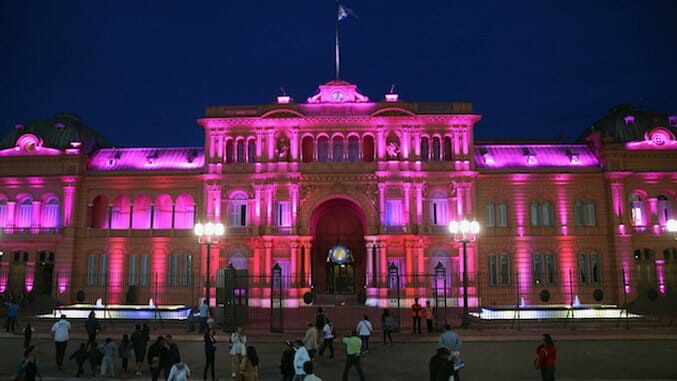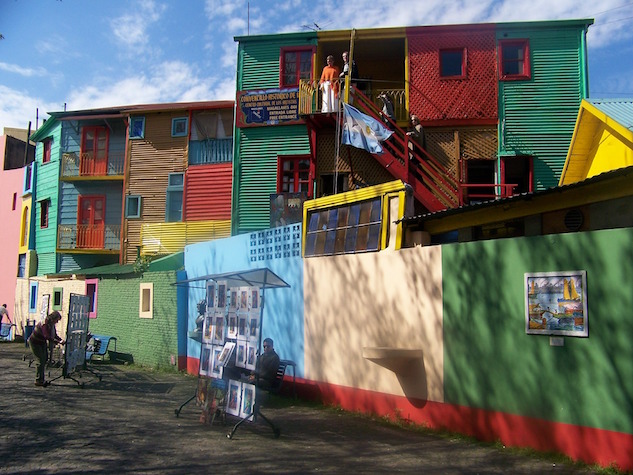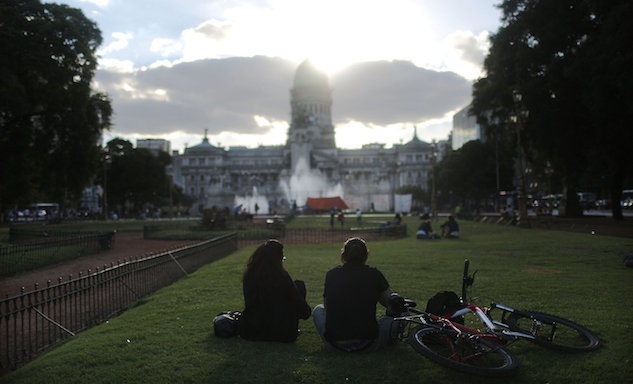Checklist: Buenos Aires, Argentina
Photo below by Alexander Hassenstein/Getty Travel Lists Argentina
A South American urban hub with extensive European influence, Buenos Aires, Argentina is nothing short of a world-class city. Truly a city that never sleeps, Buenos Aires is overflowing with spectacular architecture, political history, mouthwatering food, and fine art to spare. If you visit the “Paris of South America” (warning: never actually use that phrase in Buenos Aires), these nine spots will allow you to explore some of the best of what this magnificent capital city has to offer.
1. Plaza de Mayo
One of the most historically and politically important spots in the city (which is saying quite a lot), is Plaza de Mayo, the site of the May Revolution in 1810. Since it’s establishment, Plaza de Mayo has been the site of nearly every major political event in the history of the country and is one of the oldest plazas in Buenos Aires. Plaza de Mayo is also home to La Casa Rosada (pictured at top), which is where Argentina’s president works; presidents are also prone to give public addresses from the Casa’s famous Evita balcony. If you visit the plaza every day for a week, you’re almost guaranteed to see a protest.
2. El Ateneo Grand Splendid
Bibliophiles, rejoice! Argentines are an exceptionally well-read group and the number of bookshops you will find in Buenos Aires reflects this love for reading. In particular, El Ateneo Grand Splendid, which is one of the largest bookstores in South America, is a perfect illustration of Porteños’ love for reading. Formerly a theater, El Ateneo maintained the architectural integrity of its interior, filling the seating areas with shelves and shelves of books. The stage is now a small cafe where shoppers can sip café con leche and peruse their new purchases. This site is hands down one of the most beautiful bookstores you can find anywhere in the world.
3. Cementerio de la Recoleta

El Cementerio de la Recoleta (the Recoleta Cemetery) is a veritable city of the dead. The cemetery is expansive (one could easily spend an entire afternoon wandering the aisles) filled with ornate and haunting mausoleums. History buffs (or fans of Andrew Lloyd Weber) will want to be sure to visit the cemetery to see the resting place of Eva Perón (AKA Evita). A tip: when you scan the map of the cemetery at the entrance, you will find Evita and her family under the name Duarte, which was the famous Argentine’s maiden name.
4. MALBA
Museo de Arte Latinoamericano de Buenos Aires (MALBA) is a small museum that packs a tremendous artistic punch. The beautiful space features only contemporary art, primarily from Latin American artists—hence the name. Check out visiting exhibits that feature images of Frida Kahlo, photography and light installations, and a permanent collection of 140 pieces by Latin American artists. The museum also has a fantastic gift shop, where the goods sold are actually pretty reasonably priced (a rarity for museum shops).
5. La Boca
This historic neighborhood was named for its position at “the mouth” of the Riachuelo. It served as the port of call for thousands of immigrants from Europe in the late 1800s and early 1900s, and it’s where they ended up living, struggling, and hoping. Now, it’s home to the working class, Buenos Aires’ artists and the Boca Juniors, one of Argentina’s top futbol teams. La Boca is a bit of a tourist trap (people dressed as tango dancers will offer to take a photo with you for a price, and there are hundreds of souvenirs for sale on the sidewalks), but it is worth wading through the crowds to see the brightly painted tin and wood homes.
6. La Catedral
To travel to Buenos Aires and not experience tango would be a sin. La Catedral tango club is a hip and authentic way to experience tango that is neither pretentious nor intimidating. Arrive late in the evening (11 p.m. or midnight), and enjoy excellent cheap wine, empanadas, and even take a tango lesson if you’re feeling bold before enjoying a show. Situated in a massive and eclectically decorated (though, fair warning: it is not air-conditioned) space, La Catedral is a local tango gem.
7. Congreso

Photo by Mario Tama/Getty
Unlike in the U.S., the plaza that holds the Argentine Congress is a popular place amongst locals and tourists. The architect responsible for this structure also designed Teatro Colon but was murdered before either building was complete. Needless to say, this building is a marvel; it was established in celebration of the May Revolution’s centennial in the Greco-Roman style with strong Parisian Beaux Arts influences and took nine years to complete. It’s made of Argentine gray granite with a bronze roof, and its immediate surroundings are every bit as special. One of three official casts of The Thinker by Auguste Rodin is on display in the plaza. Be sure to admire the other original statues, the fountains, and the couples laying out on the lawn enjoying a beer and a nap. Feel free to follow suit; the Congressional Plaza is a great spot to read a book, have a snack, and people watch. You can also take a tour of the building’s chambers, filled with more bronze and statues, and Corinthian columns.
8. Hipodromo Argentino de Palermo
It’s not as popular as fútbol, but polo is still a big deal in Argentina. If you want to catch a match in Buenos Aires, seek out Hipodromo Argentino de Palermo, a polo field, casino, and music venue in the chic Palermo neighborhood. The huge outdoor space that the Hipodromo occupies makes it the perfect locale for huge parties. If you’re so inclined, you can hit up a DJ show on weekend evenings, but be sure to take a nap before. Argentine parties and shows start around midnight and can rage well past 6 a.m.
9. La Biblioteca Nacional Mariano Moreno
Architecture lovers will be extremely content no matter where they wander in Buenos Aires, but a special trip should be made to La Biblioteca Nacional Mariano Moreno, the National Library. The original library was established in 1810 as an integral part of the area’s enlightenment, in the hopes of bringing about deep change in society via knowledge. This Brutalist behemoth designed in the 1960s is a breathtaking piece of architecture and a happy place for any lover of books and brutalismo. The edifice of the building itself is imposing, and the contents of the massive library are equally impressive. Enjoy the changing view of the structure as you walk up a hefty number of steps to arrive at the doors of the library itself. If you are simply an Evita fan, you’ll want to stop by this spot as it is the site of her former home.
Elizabeth King is a Chicago-based writer who covers culture, politics, and travel.